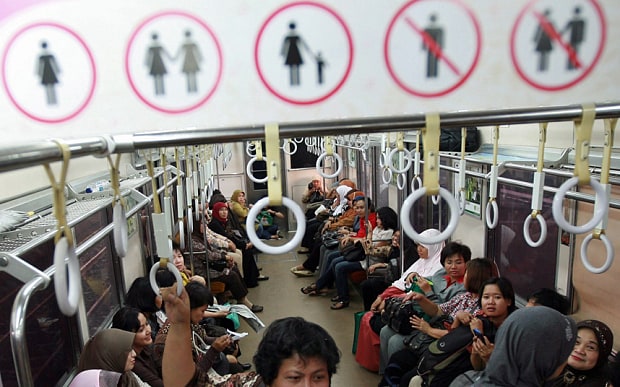
"Women-only railway cars should be introduced in the subway. This will help protect women from abuse on public transport,” First Deputy Chairman of the Public Chamber of Russia’s Leningrad region Vladimir Petrov said. He sent a letter to Russian Transport Minister Vitaliy Savelyev in this regard. Petrov said that the practice of dividing public transport into "general" and "women-only” is already widespread in the world, and called for the application of this practice in various types of public transport in Russia.
A similar initiative was raised in the Russian Federation Council in 2015, but wasn’t implemented.

When it comes to the world practice, in fact, in a number of countries this experience is used in different formats. For example, the practice of separate carriages for women has been applied in the subways of Tokyo and other major cities since 2000. However, the ban on men riding in "women's cars" is not in force all day, but during peak hours, especially between 7-9 a.m. Women and children are allowed in those carriages.
The practice of separate carriages for women is applied in Mexico as well. In the Mexican subway, "women-only railway cars" are painted pink. "Pink buses" and "pink taxis" have been launched in Mexico since 2008.
A similar practice has been used since 2007 in Cairo, Egypt. However, despite that a long time has passed, this method has not fully justified itself in this city. The reason is that men do not follow the rules, as well as try to sell women's products in these cars. In addition, both wagon and bus cabins in Egyptian public transport are divided into two parts. Women mostly sit in the front seats.
The "women-only rail carriage" practice was introduced in Indonesia in 2012. The first and last carriages of the women-only train were separated and painted in orange and pink.

But the Indonesian government's attempt lasted only seven months. Due to the overcrowding in other carriages, passengers had to pass over to women's carriages. For this reason, "women-only carriages" were abolished in Indonesia. However, the government plans to reintroduce this practice as the number of train routes increases.
In Thailand, the method was introduced in 2014 after a girl was raped and killed. The method used on three important train routes in the country has been particularly effective at night. In Thailand, "women-only carriages" are distinguished by dark pink and purple curtains.
Brazil is one of the countries where the practice of women-only carriages is applied. The method, which has been used in the Rio de Janeiro metro and suburban trains since 2006, has not been not unequivocally successful. The reason is that men break the rules and often fight. Therefore, the process is monitored by armed guards during peak hours. However, in Brazil, some women use general rail carriages. By the way, there are buses for women in Brazil.

Wagons marked "women-only" are no longer uncommon on India's domestic railways. The practice of separate wagons for women is used in Delhi, Mumbai (formerly Bombay), Calcutta and Chennai (formerly Madras) in India. In recent years, "pink taxis" have been launched in India.
In the Iranian capital, Tehran, the last subway cars are reserved for women, and this innovation is being implemented without any problems. "Pink buses" have been used in Tehran since 2006.
By the way, although the introduction of women-only bus practice for women in Turkey was brought up in 2012-2014, no concrete steps have been taken in this direction. Only in the city of Sanliurfa, after the murder of a female student, a bus for girls was put into operation between the dormitory and the university.
The introduction of this innovation is also discussed from time to time in London. However, Transport for London said there were no plans to use such a method in the future.

By the way, in some countries, where there are no separate carriages and buses for women, "pink taxi" services with a female driver are widespread. These countries include Malaysia, Australia, New Zealand, Canada, Pakistan, Turkey and others.
The Thomson Reuters Foundation conducted a survey in five major cities around the world - Tokyo, London, New York, Cairo and Mexico - on the effectiveness of a separate rail car and bus experience for women. Seventy percent of Tokyo residents support separate zones for women on trains and buses. The fact is that two-thirds of the attacks in Tokyo take place on trains and bus stations. In this sense, women prefer to travel in separate carriages and buses. In Cairo and Mexico, 60 percent and 55 percent of women, respectively, support the method. Only 30 percent of New Yorkers and Londoners surveyed said they support separate transport. They said the duration and cost of the trip was more important to them than safety.




















